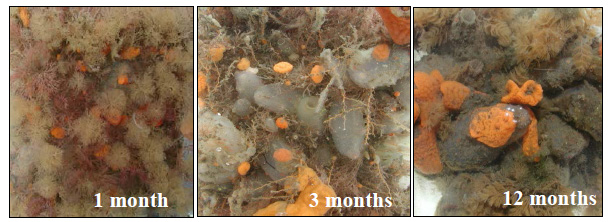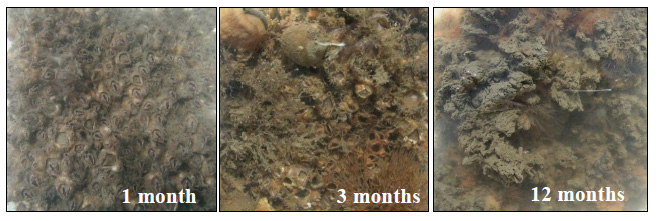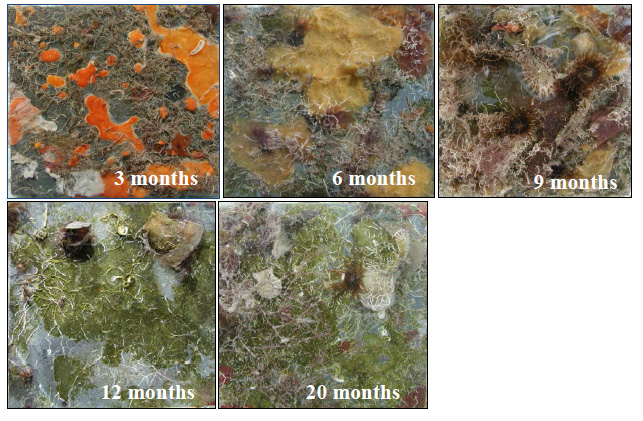
(a) Time series of one community in Connecticut after 1 month, 3 months, and 12 months. Early stages of development are dominated by arborescent bryozoans with smaller juvenile tunicates found below. Through time, tunicates grow to adult sizes but bryozoans remain in the community.

(b) Time series of one community in Virginia after 1 month, 3 months, and 12 months. Early stages of development are dominated by barnacles. Barnacles remain through time, and a layer of sediment tube-building amphipods developed over the barnacles.

(c) Time series of one community in Florida after 1 month, 3 months, and 12 months. Communities throughout development have a basal layer of barnacles with a secondary layer of colonial tunicates and hydroids developing on top of the barnacles. While species turnover is apparent, particularly for colonial tunicates, little change to overall community structure was observed.

(d) Time series of one community in Belize after 3 months, 6 months, 9 months, 12 months, and 20 months. After three months, colonial tunicates (orange invertebrates in photo) dominate the community, with encrusting sponges dominating by 6 months. Later states (>12 months) were dominated by algae and small tube-building polychaete worms. Where the gray panel is exposed indicates areas of open space.